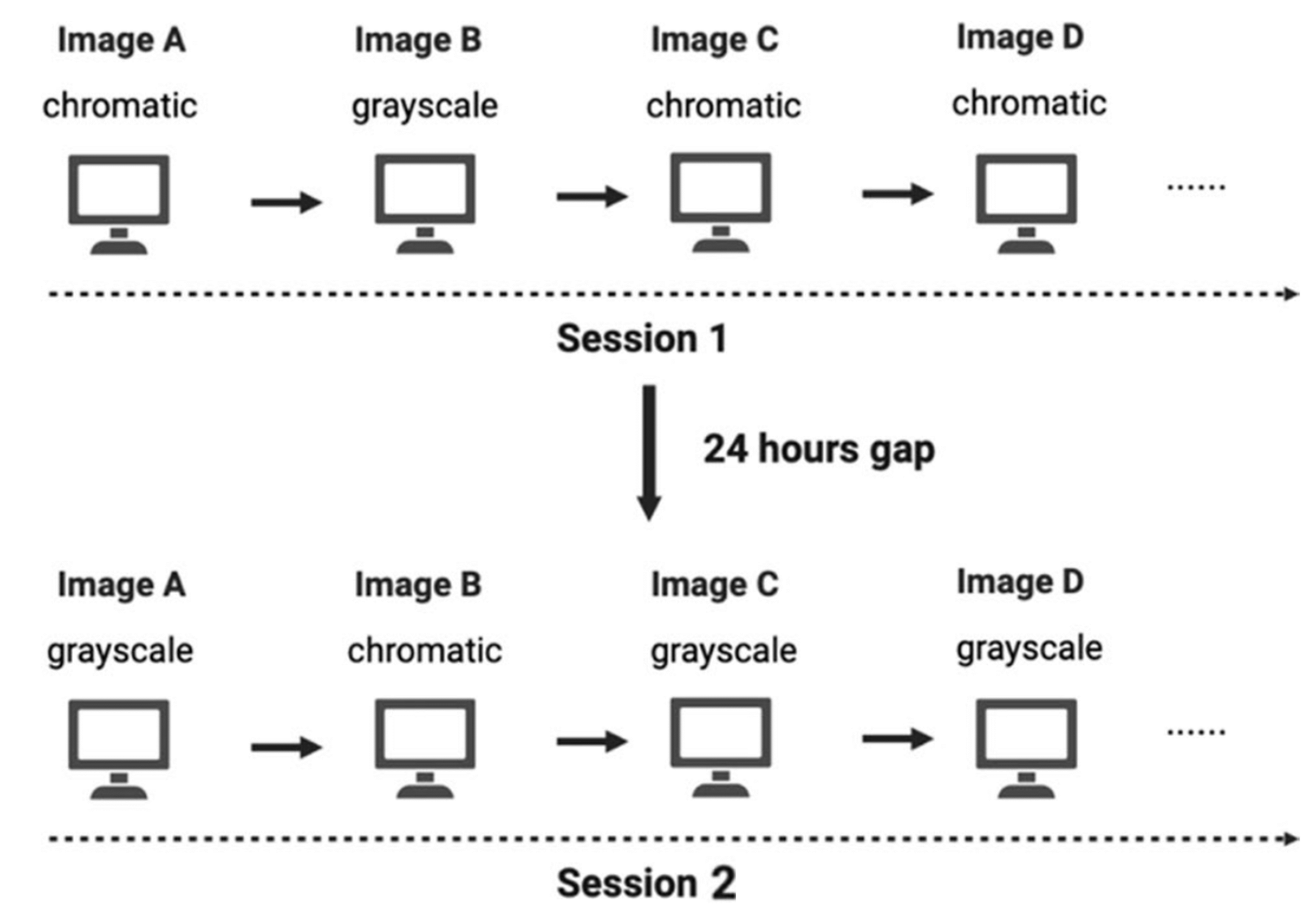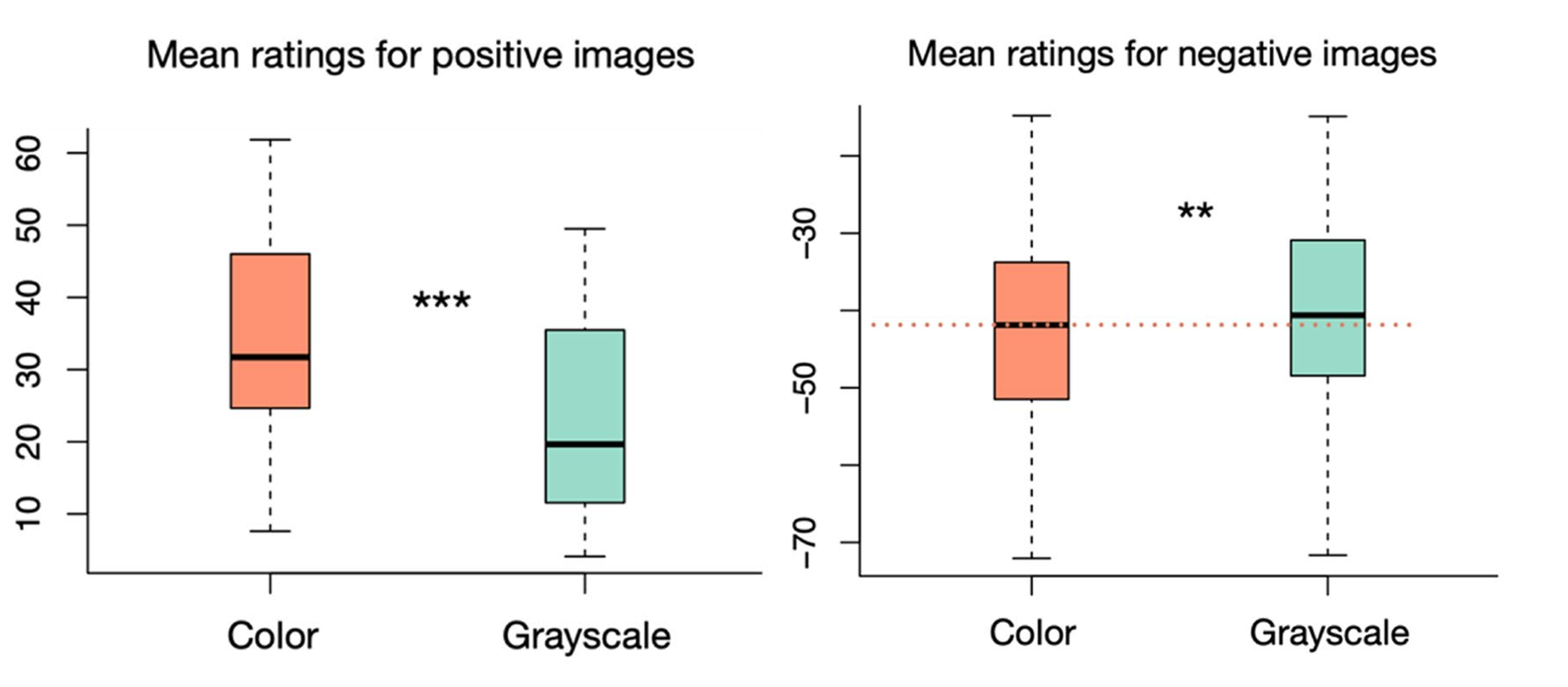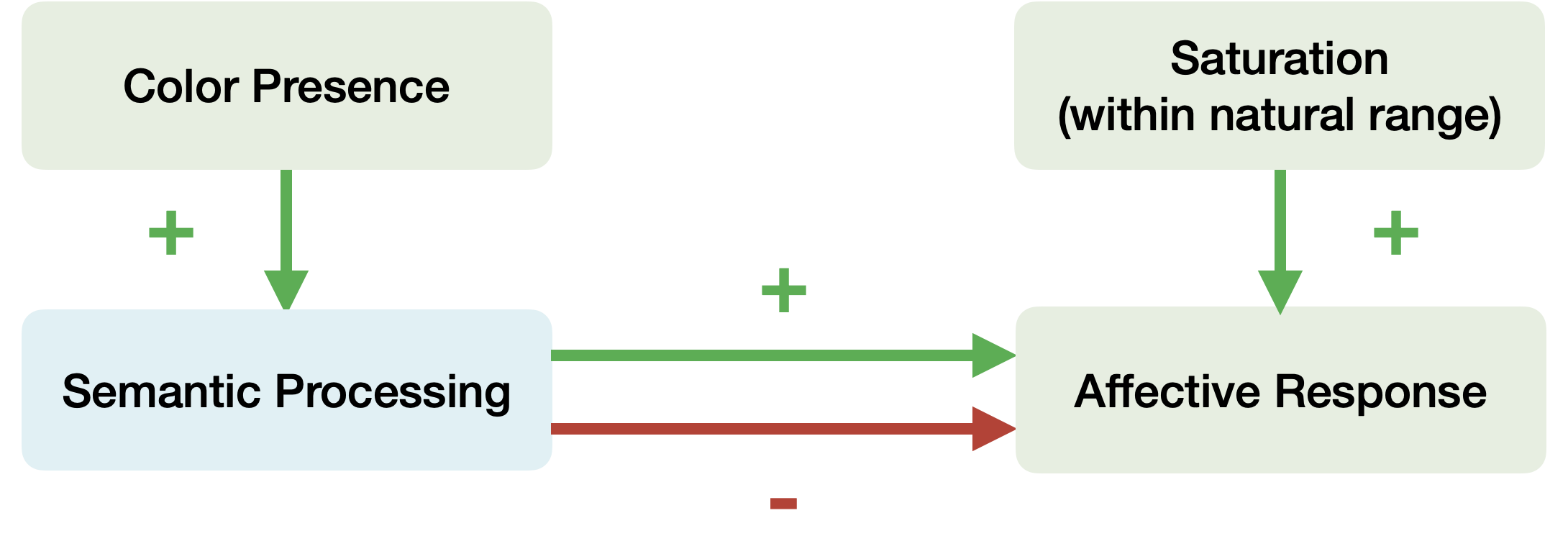Have you ever noticed how movies often depict different places using distinct color palettes? Stories happening in Mexico and the Old West, for example, are frequently portrayed with sepia tones, evoking nostalgia or toughness, while movies set in cold places or warzones are often portrayed as being grayish – or technically speaking, with decreased color saturation –, to evoke somberness.
These color choices aren’t coincidental; they are deliberate tools filmmakers use to convey moods and evoke viewers’ emotions. But what exactly is the role that colors play in evoking emotional reactions?
Chenyang Lin, Sabrina Mottaghi, and Ladan Shams (pictured below) share interesting results about this fascinating topic in their recent paper “The effects of color and saturation on the enjoyment of real-life images”, published in Psychonomic Bulletin & Review, a journal of the Psychonomic Society.

Colorful vs Colorless Scenes
The researchers were particularly interested in testing how the colors of realistic images affect emotion perception. This can be challenging because when the images depict an emotional scene, the meaning of the image itself – and not only the presence or absence of colors – influences emotional perception. To account for this, the authors used emotionally positive and negative images from the IAPS – a large set of validated images depicting emotion-evoking scenes.
The authors randomly presented these images to each participant in their original color version or as a grayscale version, and requested participants to rate the pleasantness or unpleasantness of the image. Moreover, participants looked at each image in color and grayscale versions in two separate sessions. If a given participant saw an image in color in the first session, then the same image was presented in grayscale in the second session. This clever design ensured accurate intrasubject comparisons. The figure below illustrates the experimental design.

The observed results depended on the type of image: As shown in the figure below, positive emotional images, including colors were perceived as more pleasant than their grayscale counterparts, whereas negative emotional images in color were perceived as more unpleasant than their grayscale counterparts. In the words of the authors: “Color amplifies the experience of pleasure and displeasure in real-life images”.

Vibrant Colors vs Dull Colors
But does this simply mean that the less colorful a scene is (i.e. with less color saturation), the less intense it will be perceived within its original valence (positive or negative)? Would a partially desaturated image partially reduce individuals’ emotional responses towards them? After all, color saturation is not an all-or-none matter.
While it might be tempting to assume that this should be the case, the authors decided to put it to the empirical test by using the same experimental design but comparing normally-saturated images versus images with a 50% reduction of color saturation.
The pattern of results was similar for positive emotional images: normally-saturated images were perceived as being more positive than the desaturated images. However, the normally-saturated negative emotional images evoked less (instead of more) unpleasantness than their desaturated counterparts, showing a reversal from the patterns observed before.
To reconcile their findings with the larger literature, they proposed that two processes might operate simultaneously. In the words of the authors,
“a nonlinear relationship was found between image saturation and pleasure ratings, suggesting separable mechanisms for the effects of color presence and saturation on affective response to real-life images”.
On one side, color presence would facilitate the recognition of the emotional meaning of a scene. Thus, when comparing color versus grayscale images, the presence of colors facilitates the perception of the emotion depicted in the image, making positive images more pleasant and negative images more unpleasant.
On the other side, we would be inclined to perceive more colorful images as having a higher aesthetic value, always evoking a more positive emotional response (i.e. higher pleasantness) regardless of the original emotional valence of the image.
Thus, because of their aesthetic value, the normally-saturated versions of the negative emotional pictures were slightly more pleasant than their desaturated counterparts. Moreover, it was possible to observe this effect only for the images with negative emotional content because its direction (increasing its pleasantness) was opposite than the effect of color presence (i.e. decreasing pleasantness by making negative emotional images more unpleasant), which would have affected both versions of the images to the same extent (i.e. as the 50% desaturated image had colors, even if they were less intense). The figure below summarizes the proposed effects of these two processes.

How much color would you like to have today?
According to the authors, these findings could be useful to modulate the emotional effects of images on observers. In their words,
“If the goal is to reduce the negative emotional toll on observers who have to view disturbing images or videos, the presenter may remove color and convert the images/videos to grayscale”.
This would be useful, for example, as an intermediary step in exposure-based treatments for anxiety.
And for the rest of us, it may come in handy as a reminder that some places’ real colors (and emotions) might be quite different than what movies may have led us to believe.
Featured Psychonomic Society article
Lin, C., Mottaghi, S. & Shams, L. (2023). The effects of color and saturation on the enjoyment of real-life images. Psychonomic Bulletin & Review, https://doi.org/10.3758/s13423-023-02357-4
